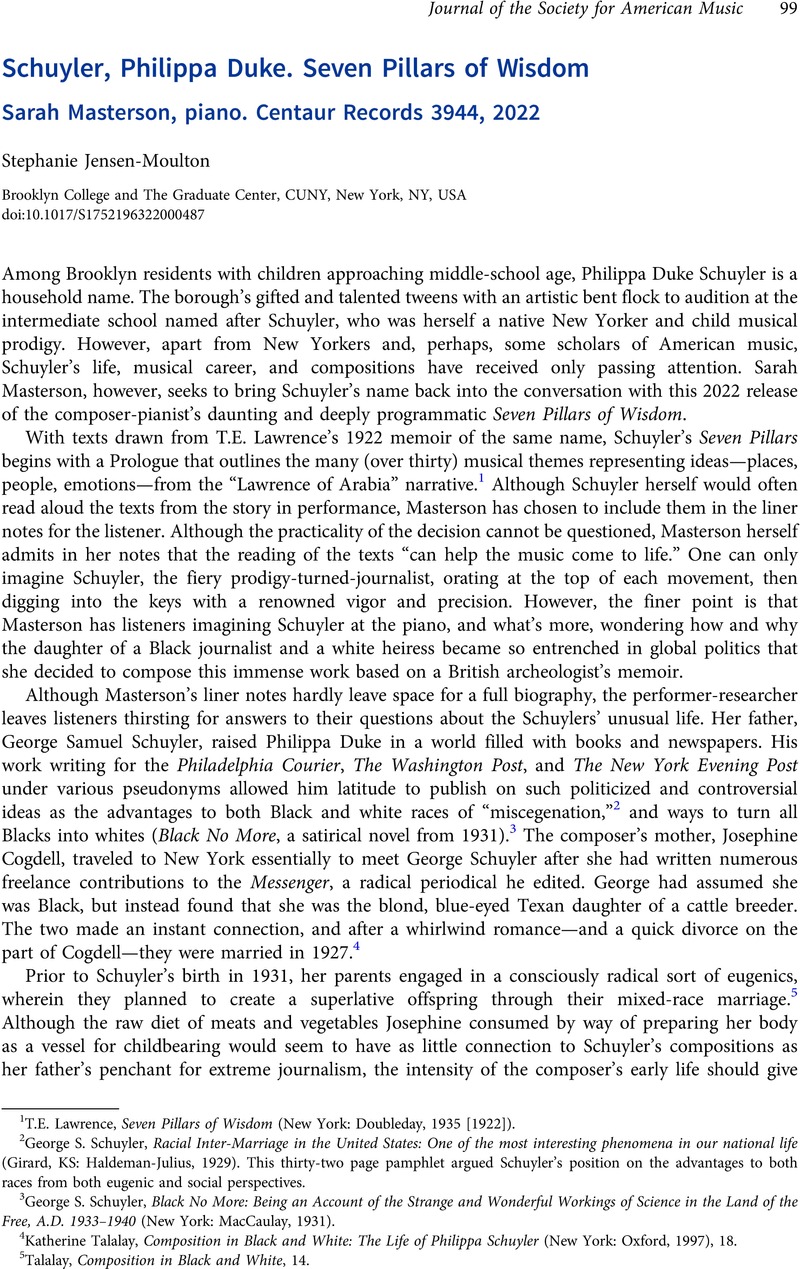No CrossRef data available.
Article contents
Philippa Duke Schuyler. Seven Pillars of Wisdom Sarah Masterson, piano. Centaur Records 3944, 2022
Review products
Published online by Cambridge University Press: 03 February 2023
Abstract

- Type
- Media Review
- Information
- Copyright
- Copyright © The Author(s), 2023. Published by Cambridge University Press on behalf of the Society for American Music
References
1 Lawrence, T.E., Seven Pillars of Wisdom (New York: Doubleday, 1935 [1922])Google Scholar.
2 Schuyler, George S., Racial Inter-Marriage in the United States: One of the most interesting phenomena in our national life (Girard, KS: Haldeman-Julius, 1929)Google Scholar. This thirty-two page pamphlet argued Schuyler's position on the advantages to both races from both eugenic and social perspectives.
3 Schuyler, George S., Black No More: Being an Account of the Strange and Wonderful Workings of Science in the Land of the Free, A.D. 1933–1940 (New York: MacCaulay, 1931)Google Scholar.
4 Talalay, Katherine, Composition in Black and White: The Life of Philippa Schuyler (New York: Oxford, 1997), 18Google Scholar.
5 Talalay, Composition in Black and White, 14.
6 Ibid., 111–12.
7 Schuyler, Philippa Duke, Adventures in Black and White (New York: Speller, 1960)Google Scholar.
8 Schuyler, Philippa Duke, Seven Pillars of Wisdom liner notes by Sarah Masterson (Centaur, 2022), 2Google Scholar.
9 Quoted in Schuyler, Seven Pillars of Wisdom, 2.


